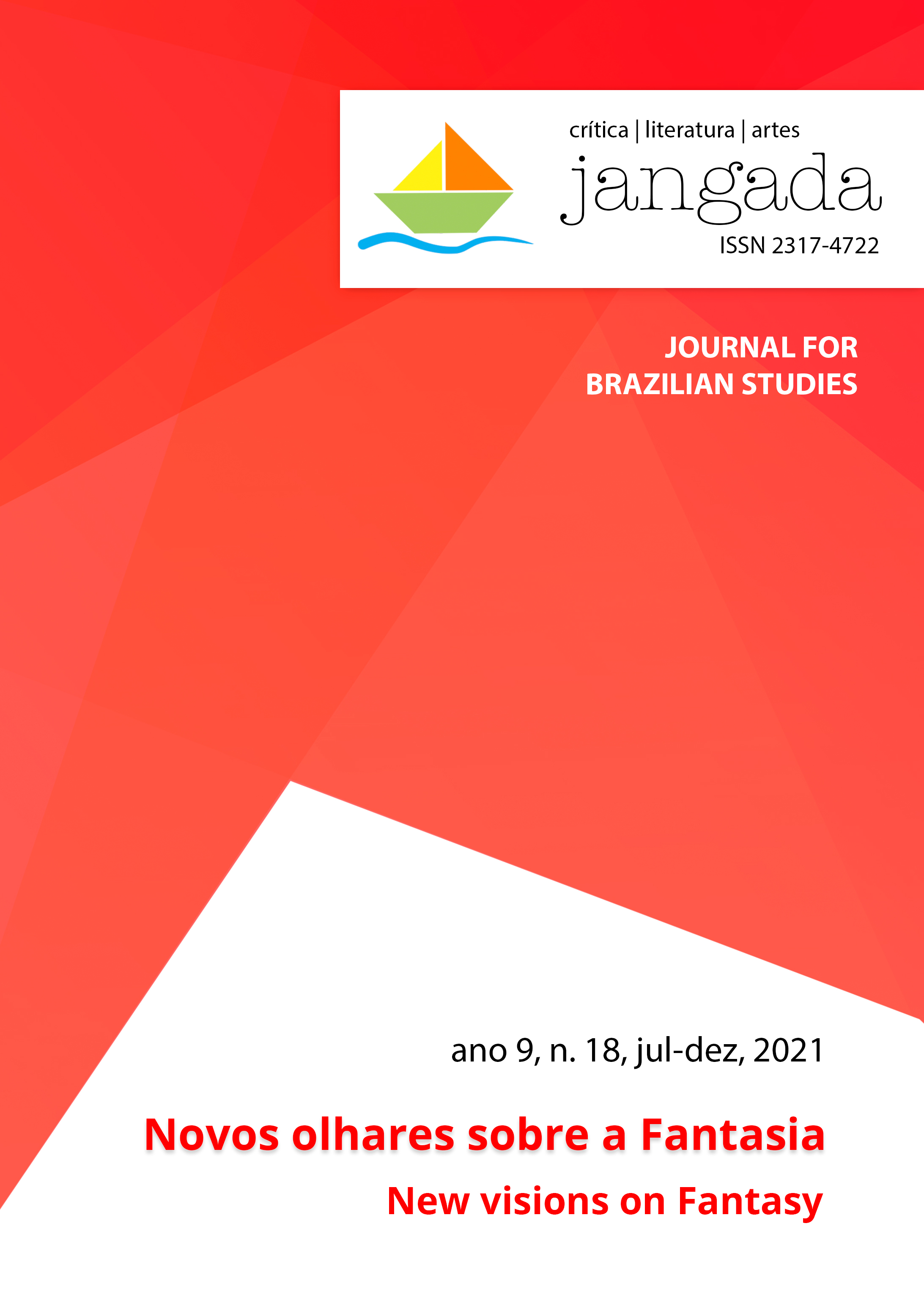Fantasia e busca mítica na ficção 'New Weird' de China Miéville
DOI:
https://doi.org/10.35921/jangada.v1i18.377Keywords:
fantasia, mito, insólito, estrutura narrativa, China MiévilleAbstract
This article aims to demonstrate how China Miéville's novel Perdido Street Station (2000) subverts typical plot-structuring conventions of literary fantasy, especially those related to the mythical quest adventure derived from Joseph Campbell's concept of monomyth. Perdido Street Station is considered the seminal novel of the New Weird, a movement or subgenre that emerged during Britain's Boom of genre fiction at the beginning of the 21st century. Its features include a concern with the potential for social and political criticism of genre fiction, the blurring of the boundaries between science fiction, fantasy and horror and the subversion of formal and thematic conventions of these genres, promoting both a return and a renunciation. We will demonstrate how certain aspects of modern fantasy derived from Tolkien's tradition are displaced in Perdido Street Station, such as the duality of good and evil, the “eucatastrophic” ending which regenerates the world and the hero's divine transformation. These shifts alter stages of the traditional narrative structure of fantasy, opening the novel to the possibility of a critical thinking of our reality.
Downloads
References
ATTEBERY, Brian. Strategies of Fantasy. Indianapolis: Indiana University Press, 1992.
______. Structuralism. In: JAMES, Edward; MENDLESOHN, Farah. The Cambridge Companion to Fantasy Literature. Cambridge: Cambridge University Press, 2012.
BROOKER, M. Keith. The Other Side of History: Fantasy, Romance, Horror and Science Fiction. In: CASERIO, Robert L. The Cambridge Companion to the Twentieth-Century English Novel. Cambridge: Cambridge University Press, 2009.
CAMPBELL, Joseph. O erói de mil faces. São Paulo: Pensamento, 2007.
CLUTE, John; GRANT, John. The Encyclopedia of Fantasy. Denton: Orbit Press, 1997.
ECHEVERRÍA, Teresa P. Mira. New Weird: sempre é possível outra realidade. Fantástika, São Paulo, v. 3, p. 135-145, 2020.
FREEDMAN, Carl. Art and Idea in the Novels of China Miéville. Canterbury: Gylphi, 2015.
FRYE, Northrop. Anatomia da crítica: quatro ensaios. São Paulo: É Realizações, 2014.
JAMESON, Fredric. Archaeologies of the Future. London: Verso, 2005.
________. Radical Fantasy. Historical Materialism, London, v. 10, n. 4, p. 273-80, 2002.
MIÉVILLE, China. Long Live the New Weird. The 3rd Alternative, Cambs, n. 35, p. 3, julho 2003.
________. Estação Perdido. São Paulo: Boitempo, 2016.
NOYS, Benjamin; MURPHY, Timothy S. Introduction: Old and New Weird. Genre, Oklahoma, v. 49, n. 2, p. 117-134, julho, 2016.
TOLKIEN, J. R. R. Árvore e folha. São Paulo: WMF Martins Fontes, 2013.
VANDERMEER, Jeff. The New Weird: “It’s Alive?” In: VANDERMEER, Ann.; VANDERMEER, Jeff. The New Weird. São Francisco: Tachyon, 2008.
VINT, Sherryl. Introduction: Special Issue on China Mieville. Extrapolation, Brownsnville, v. 50, n. 2, p. 197-199, 2009.








